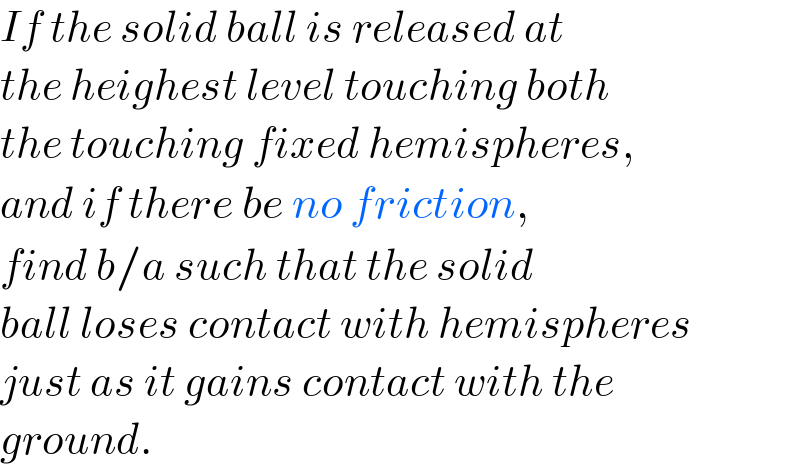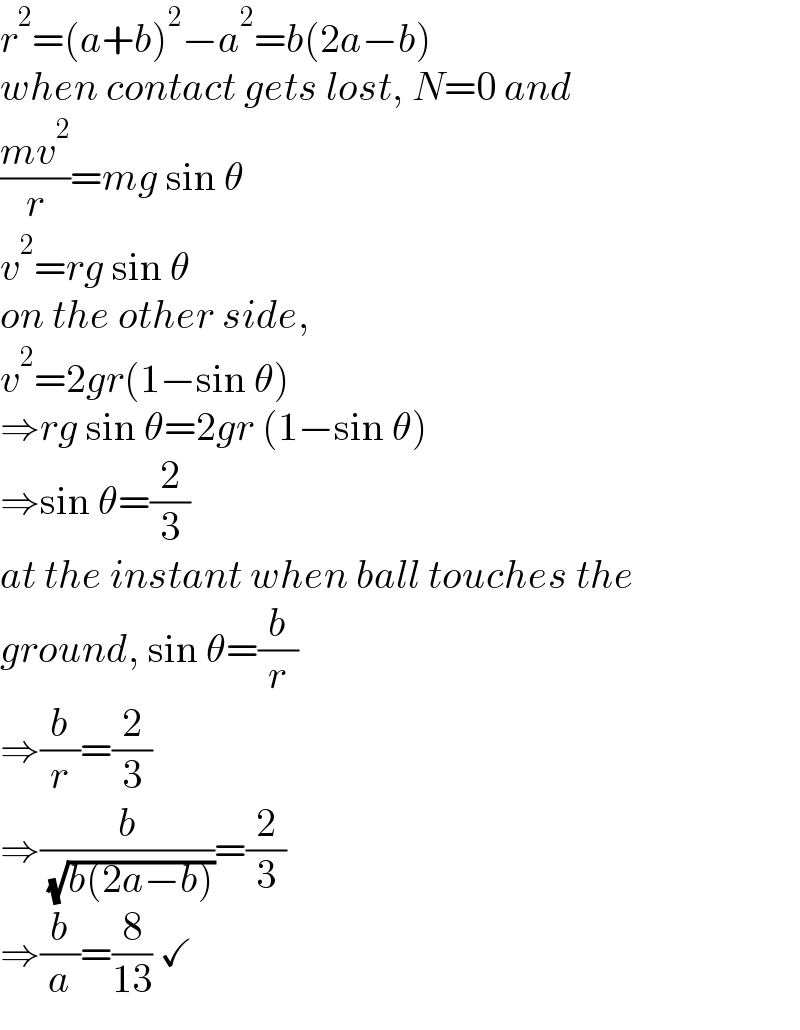
Question and Answers Forum
Question Number 185490 by ajfour last updated on 22/Jan/23

Commented by ajfour last updated on 23/Jan/23

Answered by mr W last updated on 24/Jan/23

Commented by mr W last updated on 24/Jan/23

Commented by ajfour last updated on 24/Jan/23

